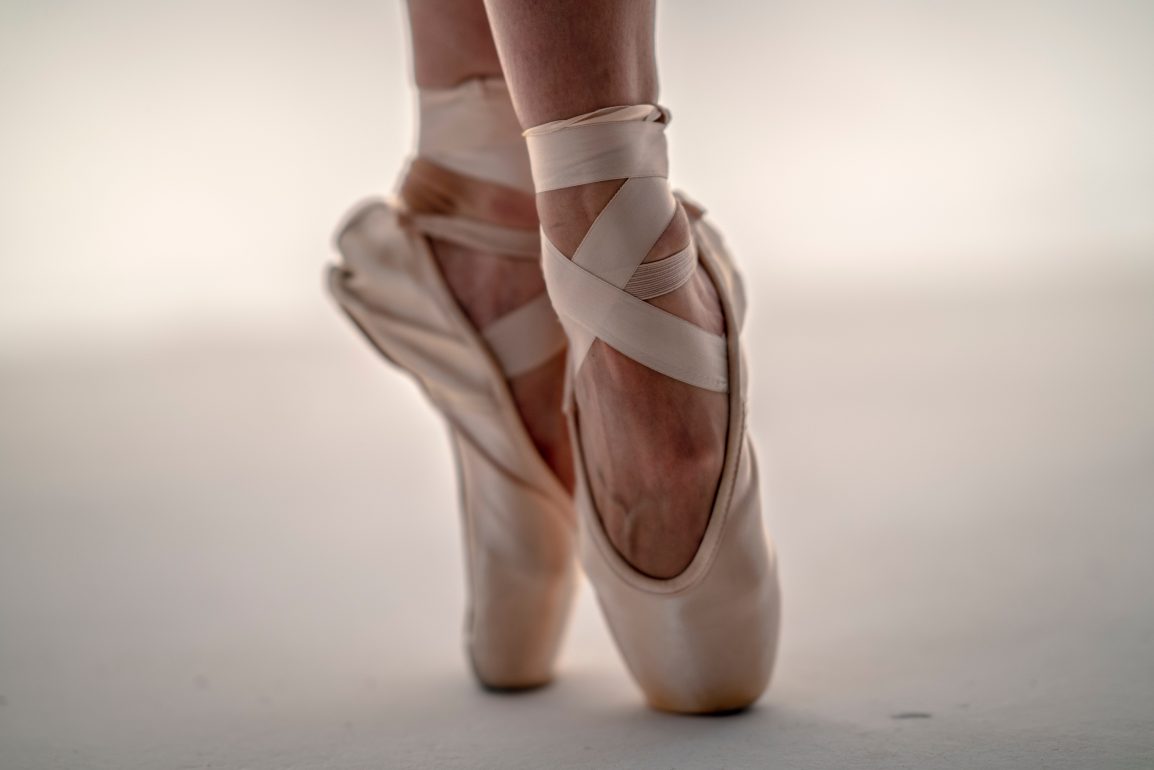Getting your pointe shoes is a very exciting event as a ballerina. It represents the beauty of the art form and signifies the hard work to get to that step. However, it brings a lot of worry to young dancers who fear the hardships ahead.
My sister got her pointe shoes a year ago. “I love pointe shoes because they enhance the beauty and grace of dance. It’s such an experience to be fueling your passion. But when I got my pointe shoes, it made me enjoy it even more. I felt like a true ballerina. Floating through the clouds, you know? They also make my feet look a nice shape,” she says.
Going to a school where she dances for three to four hours per day, her experience has accumulated. Thus, she helped me compile a Q & A about pointe shoes, as well as some general hacks.
Is it painful?
For a beginner, yes. Your feet have never been exposed to an experience like this. But, don’t worry, you get used to it through time. For me, the discomfort started out bad, and then reduced to just bunion and big toe pain. Here’s another GirlSpring article on how one dancer manages her pain.
What goes inside a pointe shoe?
There’s a lot of variation in pointe shoe protection and honestly you just have to see what works for you. Usually toe spacers for bunions, toe pads, ballet tape, second skin gel squares, and LambsWool goes inside. Some dancers need even more than this and some only need toe pads. It’s all personal preference.
What are some beginner brands?
Beginner brands are Bloch and Capezio. When you become advanced, try Russian Pointe or Gaynor Minden.
What do I need to sew my pointe shoes?
The necessities include a needle, pink or white thread, scissors, and a safe pouch to carry it in. There are hundreds of YouTube videos with in depth explanations to sew your pointe shoes. It becomes natural after a few times, so don’t get frustrated. Make it a fun process by listening to music or watching TV while you sew.
Helpful How To’s:
https://www.youtube.com/watch?v=OsIVowg17H8
https://www.youtube.com/watch?v=W-K3eJHuGJ4
https://www.youtube.com/watch?v=KYps1HsaTtI
How often do you fall on pointe?
Definitely expect to fall a few times in the beginning. It’s normal! Remember to pick yourself up and continue. If the falling really gets out of hand, I would recommend talking to your instructor on how to improve your balance on pointe. This is all a new experience. So, it’s okay to ask many questions.
How do I know when my pointe shoes are “dead”?
Ballerinas use the term “dead” to refer to pointe shoes that are getting useless and need to be changed. You’ll know when you start to feel the floor more and it’s much easier to go off the box. Another big hint is that it will generally hurt more than normal.
How long do pointe shoes last?
It truly depends how frequently you’re dancing. Typically, a beginner needs new points every three-to-four months.
What can I do to get used to my pointe shoes?
For beginners, always do pre pointe exercises to strengthen your feet and legs (releves, stretches, theraband exercises)
General Hacks
- A safe alternative to fixing fraying ribbons is wiping clear nail polish on the ends.
- If the heel area is ever falling off, tighten your elastics or use a heel filler (Dr Shultz has very nice ones)
- Use waterproof ballet tape on toes to prevent blisters
- Try all types of toe pads to find what works best (gel, cotton, jersey knit, etc)
- Use ice to ease swollen feet
- Purchase jet glue to harden your shoes when they’re dead to save money
- How to Jet Glue Your Pointe Shoes: https://www.youtube.com/watch?v=hBqjnABJCJI
- Tiger Balm or Icy Hot helps ease pain
- If your thread is breaking too easily, a sturdier alternative is dental floss.
I hope you enjoy your pointe shoe journey! Remember that you have instructors and older students who are always there to help you. It is such a wonderful privilege to be able to dance. Take good care of your feet! Good luck.

